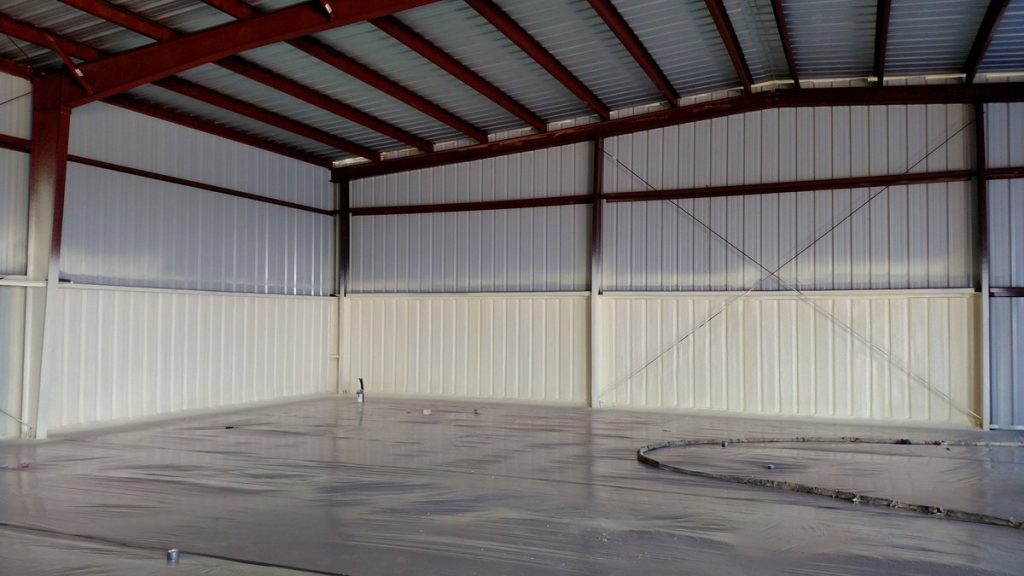Steel Buildings: The Backbone of Modern Construction!

Steel buildings have become a cornerstone of contemporary architecture and construction, reflecting both the technological advancements and evolving aesthetic sensibilities of our time. Their rise in popularity is not merely a trend but a testament to the intrinsic benefits that steel as a material offers. From towering skyscrapers in bustling metropolises to vast industrial warehouses and chic residential homes, steel buildings are reshaping skylines and redefining our understanding of structural ingenuity.

The Evolution of Steel Buildings
The history of steel buildings dates back to the Industrial Revolution when the mass production of steel became feasible. The first significant use of steel in construction was the Home Insurance Building in Chicago, completed in 1885. This landmark structure, often considered the world's first skyscraper, highlighted the potential of steel to revolutionize construction methods and urban planning.
Steel's strength-to-weight ratio, durability, and versatility quickly made it the material of choice for architects and engineers. The advent of the steel frame allowed buildings to reach unprecedented heights and scales, fundamentally changing the landscape of cities around the globe. The iconic Empire State Building, completed in 1931, stood as the tallest building in the world for nearly 40 years, exemplifying the capabilities of steel construction.
Advantages of Steel Buildings
Strength and Durability
One of the most significant advantages of steel buildings is their exceptional strength and durability. Steel is inherently robust and capable of withstanding extreme weather conditions, seismic activities, and heavy loads. This resilience makes steel buildings ideal for regions prone to natural disasters, ensuring structural integrity and safety for occupants.
Flexibility and Versatility
Steel's versatility allows for innovative design and architectural flexibility. Unlike traditional building materials, steel can be molded into various shapes and sizes, accommodating complex and creative architectural designs. This flexibility is particularly evident in modern skyscrapers, sports arenas, and large-span structures like airport terminals and bridges.

Cost-Effectiveness
Although the initial cost of steel might be higher compared to other materials like wood or concrete, steel buildings often prove to be more cost-effective in the long run. The speed of construction is significantly faster with prefabricated steel components, reducing labor costs and construction time. Additionally, steel structures require less maintenance and have a longer lifespan, leading to lower overall costs.
Sustainability
In an era where sustainability is paramount, steel buildings offer an eco-friendly solution. Steel is 100% recyclable, and modern steel production methods have significantly reduced carbon emissions. The use of recycled steel in construction projects not only conserves natural resources but also minimizes environmental impact. Moreover, steel buildings can be designed to be energy-efficient, incorporating features like insulated panels and reflective roofing to reduce energy consumption.
Applications of Steel Buildings
Commercial and Industrial Structures
Steel buildings are ubiquitous in the commercial and industrial sectors. Warehouses, factories, and distribution centers benefit from steel's ability to create large, open spaces without the need for internal columns. This open-space design maximizes usable floor area and enhances operational efficiency. Additionally, steel's durability and low maintenance requirements make it an ideal choice for structures that endure heavy use and harsh environments.
Residential Buildings
The use of steel in residential construction is growing, driven by the need for sustainable and resilient housing solutions. Steel-framed homes offer numerous advantages, including resistance to pests, fire, and weather-related damage. They also allow for more flexible interior layouts and modern, minimalist designs. Prefabricated steel homes can be erected quickly, providing a viable solution for affordable and emergency housing needs.
Agricultural Buildings
In the agricultural sector, steel buildings are commonly used for barns, storage facilities, and livestock shelters. The durability and low maintenance of steel make it suitable for rural settings where structures are exposed to the elements. Steel buildings can also be easily expanded or modified to accommodate changing agricultural needs.

Recreational and Institutional Buildings
From sports complexes to schools and hospitals, steel buildings are prominent in various recreational and institutional applications. Their ability to span large areas without internal support makes them ideal for gymnasiums, auditoriums, and other large public spaces. The strength and safety features of steel are crucial for buildings that house large numbers of people.
Innovations in Steel Building Technology
Recent advancements in steel technology are pushing the boundaries of what is possible in construction. High-strength, lightweight steel alloys are being developed, allowing for taller and more slender structures. Advanced manufacturing techniques, such as 3D printing with steel, are opening new avenues for custom-designed components and rapid construction.
Building Information Modeling (BIM) and other digital tools are revolutionizing the planning and execution of steel construction projects. These technologies enhance precision, reduce waste, and streamline collaboration among architects, engineers, and contractors.
Challenges and Future Prospects
Despite its many advantages, the use of steel in construction is not without challenges. The cost of raw materials and fluctuations in steel prices can impact project budgets. Additionally, steel buildings require skilled labor for fabrication and assembly, which can be a limiting factor in regions with labor shortages.
However, the future of steel buildings looks promising. Ongoing research and development are focused on making steel even more sustainable and efficient. Innovations such as self-healing steel, which can repair minor damages autonomously, and smart coatings that enhance corrosion resistance are set to further enhance the performance and longevity of steel structures.
Conclusion
Steel buildings represent the epitome of modern construction, embodying strength, versatility, and sustainability. As the demand for resilient and eco-friendly structures continues to grow, steel will undoubtedly play a pivotal role in shaping the future of our built environment. Whether in towering skyscrapers or humble residential homes, the impact of steel buildings is profound and enduring, standing as a testament to human ingenuity and the relentless pursuit of progress.
- Industry
- Art
- Causes
- Crafts
- Dance
- Drinks
- Film
- Fitness
- Food
- Games
- Gardening
- Health
- Home
- Literature
- Music
- Networking
- Other
- Party
- Religion
- Shopping
- Sports
- Theater
- Wellness
- News


